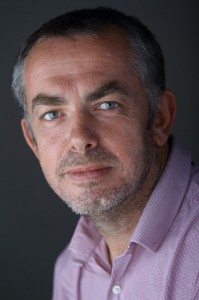Broadcast Networks adds Sony veteran, looks to the 4K future
Established nearly twenty years ago, Broadcast Networks has built up a robust reputation for its innovative design and implementation of HD and SD master control rooms, studio systems, OB vehicles, satellite uplinks and facilities for streaming media. Now, with the addition to its ranks of former Sony PSE general manager for live production solutions, Malcolm Robinson, the company is poised to embark upon its next phase of development – as Robinson and Broadcast Networks’ MD, Tom Haye, told SVG Europe during a recent conversation held in central London.
Tom, please give us a capsule summary of BN’s history…
We started out in the late ‘90s as a systems integrator specialising in studios, OB trucks and general integration projects. We operated completely independently with no specific link to any one manufacturer, although we did do a fair amount of work on behalf of Sony. But we also worked extensively for different broadcasters and playout facilitiessuch as Chellomedia, News International, Arqiva and a number of production companies across Europe such as OBTeam in Norway and SBP in Italy. Over the last 10 years we have built over 35 OB vehicles for these clients.
Towards the end of last year, however, we had to undertake a reassessment when Sony decided it was going to change its philosophy with regard to delivering OB trucks [a restructuring of the PSE arm got underway in April – Ed]. This meant we could potentially lose 40% of our business, although we knew that if Sony was stopping [its interests in this area], the business was still there [to be won]. So we started to speak to Malcolm about the opportunities this change in Sony could create for us as a team. The change for Sony meant that a team of industry experts became available and transferred from Sony to BN – adding to our capability and strengths. As an ISI we are best placed to delivery complex systems with our extensive experience of complex workflows in both the (live) production and transmission environments.
One of the great things about moving across from Sony to Broadcast Networks is that we already have great relationships with lots of broadcasters and production companies – Sky, Canal+, and so on – they all know us. We can also continue to focus on some of the same issues – not least 4K. We now have a specialist working full-time on how to develop our understanding of what we need to offer with regard to 4K, and how it should be implemented in the live arena.
Has the trend towards 4K now superseded the 3D movement? Is 3D now an endangered species?
I think Sky might argue with that – they still have a couple of Telegenic trucks out doing 3D every weekend. It’s consumer-led and there is still lots of 3D in cinemas and sports events being recorded in the format. Looking ahead, glassless 3D is coming, so there might be opportunities there as well.
But it’s true that 4K does seem to have more of a draw than 3D. There are more companies out there saying we can create an HD picture and multi-camera applications [from 4K]; more people who are eager to work with the format. I think it will be two or three years before it becomes mainstream, but customers who want to invest in new systems now would be mad to not have 4K capacity factored into their plans.
Tom, the OB sector has been highly eventful of late, not least with SIS LIVE planning to withdraw from the OB market by March 2014. What do you make of the shake-up?
Years ago, sports was there as a nationwide privilege, but it is now very much more commercial [in nature] and companies have to be extremely commercially aware. Some very companies are very good at that and know how to secure the business.
For BN, the partnership with IEC means that we have gained access to expertise and solution experts, and it gives us a great opportunity to consolidate our efforts and in doing so creating a much stronger team.
With regard to the BBC OB changes, the Corporation has changed a lot over the last few years and is under considerable pressure to get the best possible solution for the best possible value. Maybe SIS didn’t quite recognise this, or take enough time to see what its customers really required.
Malcolm, where do you see the big opportunities for Broadcast Networks in the short- to mid-term future?
Well, with 4K on the way, we can certainly do a lot of refurbishments [of OB trucks]! There are a lot of trucks out there that need upgrading, both for the new format and in terms of general renewal. Aside from OB vans, we see considerable potential in new projects involving studio facilities and playout centres, as well as helping to ‘fibre up’ sports stadia. For example, we have recently been working with outside broadcast specialist OBTeam in Norway on a long-term project that has already seen 18-20 stadia make the move to fibre. It’s been a really great collaboration. Transition to fibre is only going to accelerate, so all in all it’s quite an exciting time.
(OB Team, it should be added, repays the compliment. “Broadcast Networks operates to incredibly high standards and we are absolutely delighted with what they have achieved for us,” says OBTeam’s Espen Froysa. “With their support we are ready to face any production challenge. With BN as our solutions partner we know that we can trust them to minimise downtime to our operations. Their expertise and knowledge [are] exceptional, and their quality of work is first class.”)

